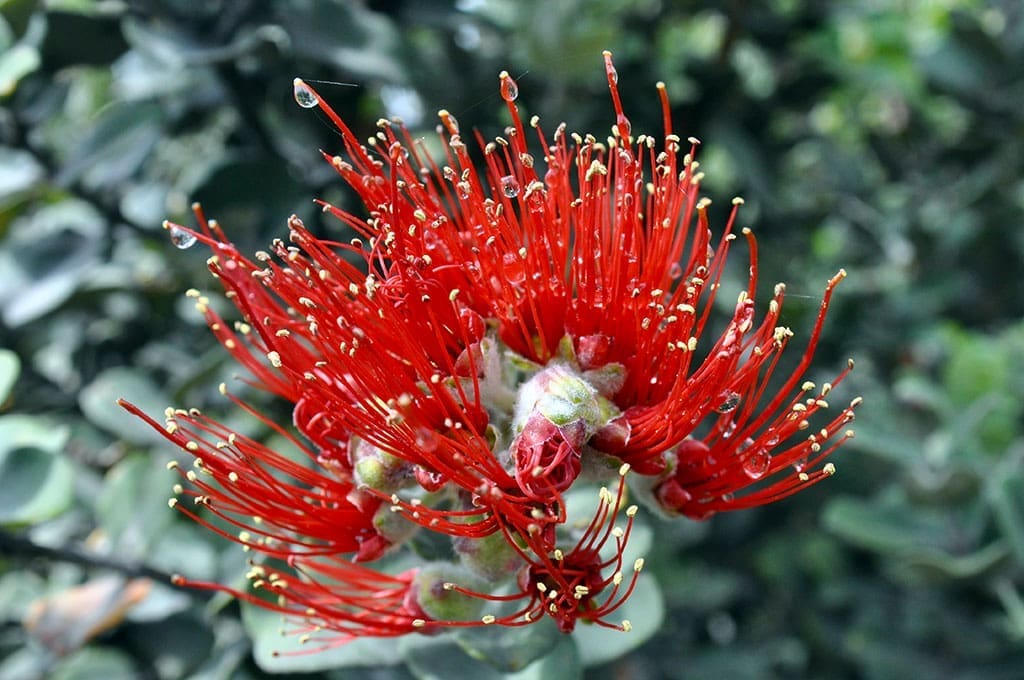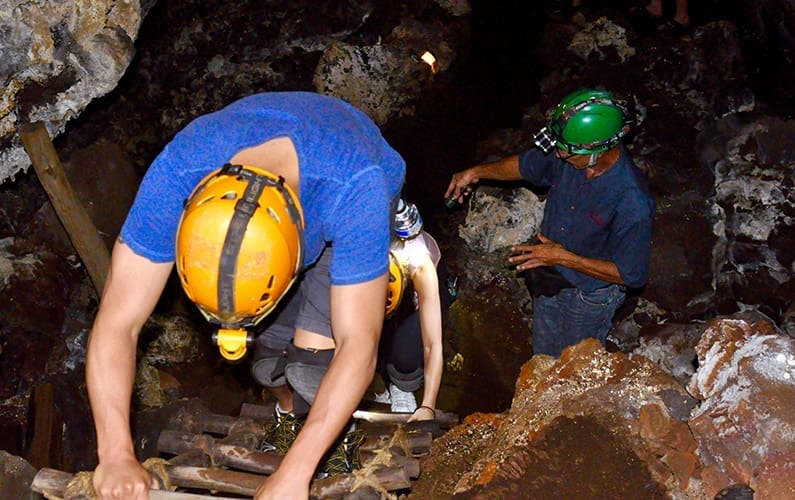What Lies Beneath – Lava Tubes
Kula Kai Caverns

I spent a chunk of New Year’s Eve underground. High winds and pounding rains blanketed Na’alehu. Even though the microclimates here on the Big Island allow me to escape any weather by just driving down the road, it was still a good day to spend inside the Earth.
Since the more famous Thurston Lava Tubes inside Hawaii Volcanos National Park have been closed since the 2018 eruptions, I visited the Kula Kai Caverns near the southern tip of the Big Island. The private owners of these caverns have taken great care to both preserve the undisturbed natural record of the lava tubes and to provide hospitality for us surface dwellers to experience what lies beneath.
When lava flows in large quantities, the surface area cools more quickly, forming a skin that gradually thickens into rock. This rock insulates the deeper lava, keeping it hot during its journey from the volcano to the ocean. Once the lava “faucet is turned off,” gravity pulls the last bit of liquid lava into the water, leaving empty passages under the hardened surface. The cooling of these underground passages is a complex process that produces colors, shapes, and lines that rival the work of any abstract artist. The massive forces of heat and motion left behind these stunning works of natural art.

The rough lava called “a’a” leaves behind craggy chunks of angular, black rock that piles up in great impassable heaps. Since a’a is porous, it acts as a natural filter of surface water. My guide poured the purest water I have ever tasted into the palm of my hand. After a tsunami devastated an indigenous village on the southern-most tip of the island, refugees found a source of fresh water in these caverns and collected it in dried gourds. Some of those gourds were found during the early explorations into this lava tube.
The porous nature of the rock also absorbs sound. As a musician, I noticed that there was no echo in these caverns. Sound is sucked up by the a’a just like the water. Our voices do not reflect off the walls. There is no echo chamber of human personality here. The walls simply take in whatever we give them, leaving behind nothing more but our simple selves. This is a place of pure quietness. A good place to listen to those voices that get drowned out by our noisy lives on the surface.
The first plant life to brave the barren moonscape of a lava flow is the ohi’a lehua (metrosideros polymorha). These twisted trees are adorned with brilliant red flowers. The story goes that Pele, the volcano goddess, was in love with Ohi’a but he had eyes for another goddess named Lehua. In Pele’s furious jealousy, she transformed Ohi’a into an ugly tree. Other gods intervened and, after much negotiation, a compromise was reached. Ohi’a and Lehua would be together forever as the ugly tree with the beautiful flower.

What Lies Beneath
That is the story from the surface. The story of what lies beneath gives us much more. Just as liquid lava follows along the path of least resistance from the volcano to the ocean, the roots of the ohi’a tree work their way through any crack in the rock they can find. Here in the lava tube, they eventually emerge into the air searching for water and nutrients. For some roots, this is a lonely existence. After navigating an uncertain path through the rock, they simply reach out into empty space, looking for what they need. They stretch out toward a goal that is neither promised nor predicted. For others, it seems that unexplainable forces have made this path easier. Our guide pointed out one ohi’a root that had reached diagonally toward the wall. Since there is little animal activity, no wind, and no unregulated human occupation of the space, this root presents a wonderful mystery.
Today is New Year’s Eve, the day that often brings introspection and resolutions toward better behavior in the coming year. As we look toward another journey around the sun, it is worth taking a lesson or two from the lava tubes. We should examine not only our actions visible on the surface of our lives but also the underlying mysteries that lie beneath. Where are those places of unexplained beauty that lie amid the shifting rubble of our internal struggles? Like the ohi’a root, how do we to connect our inner resources to the choices we make in the light of day? When does our public life compel us to reach beyond the pragmatism of surface concerns into the uncertain world of beauty that lies beneath?
My best wishes for a happy and meaningful New Year!

